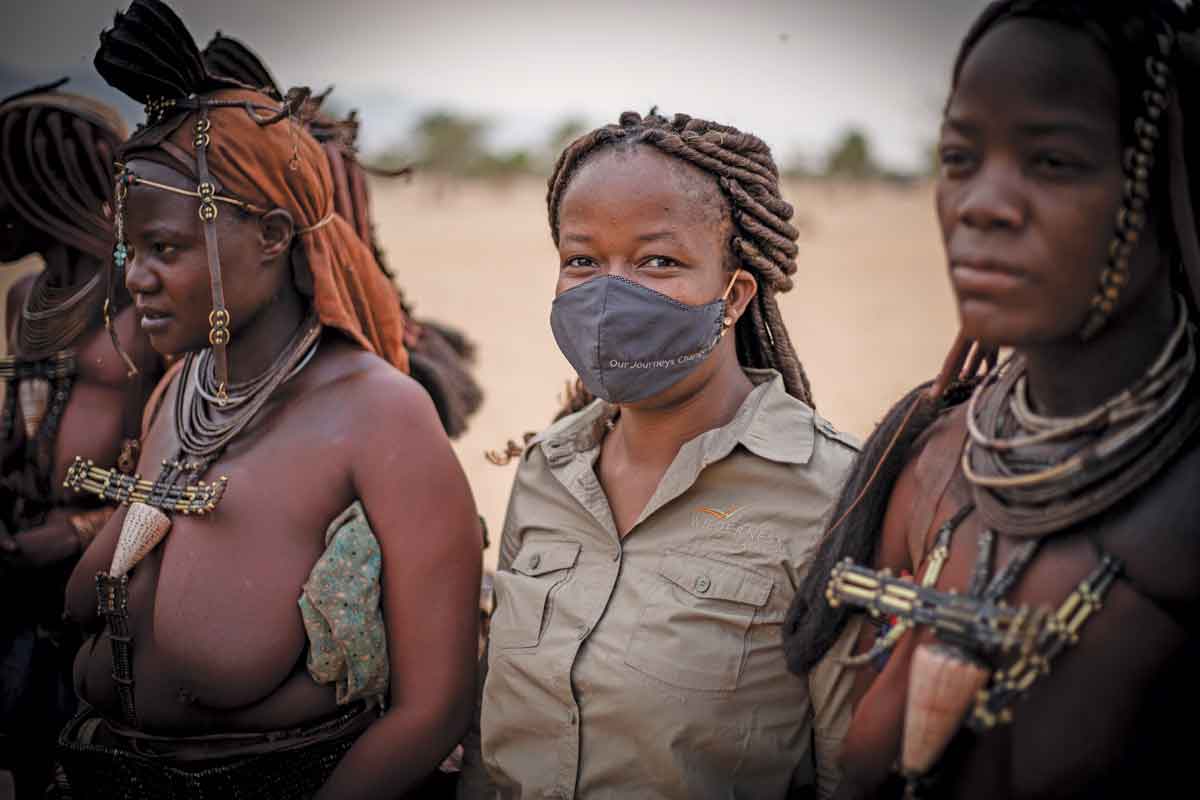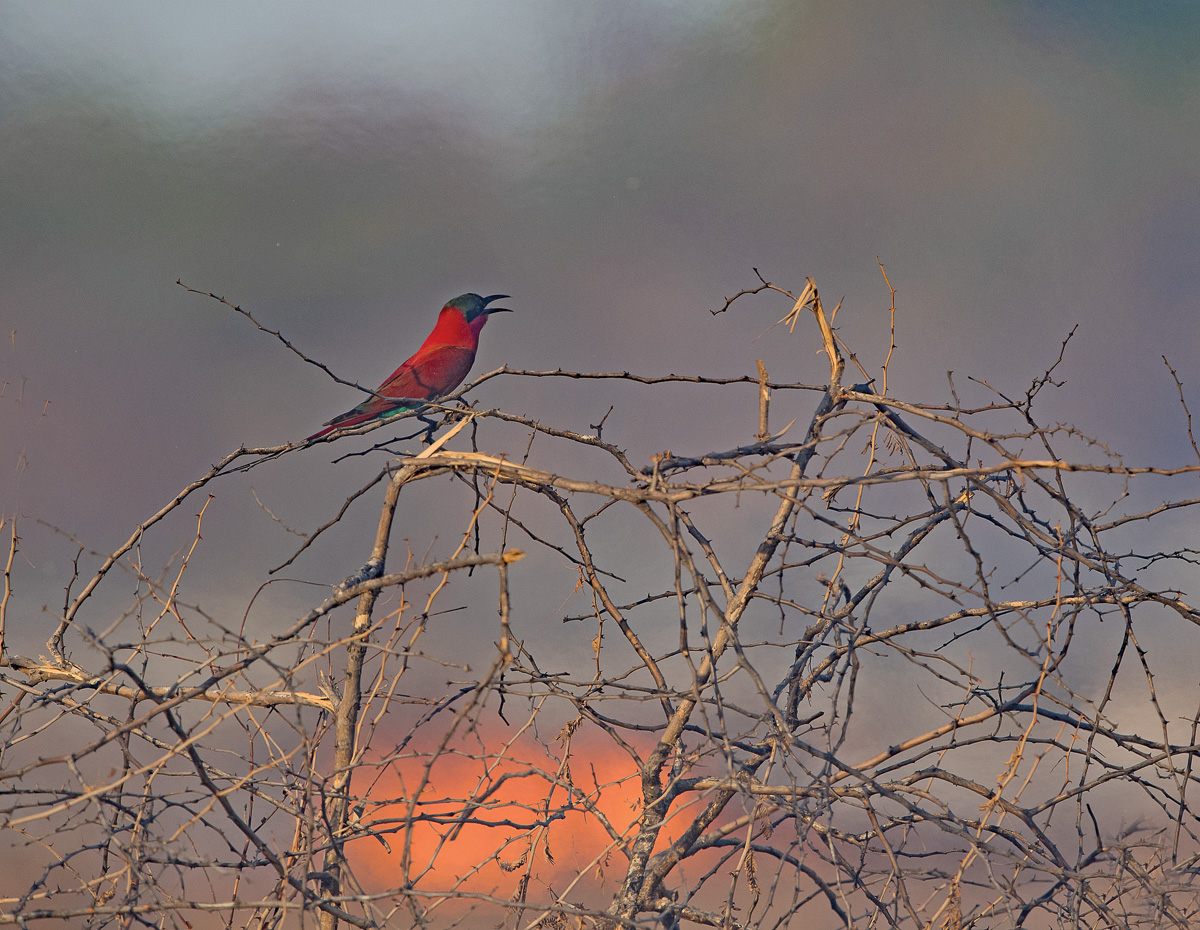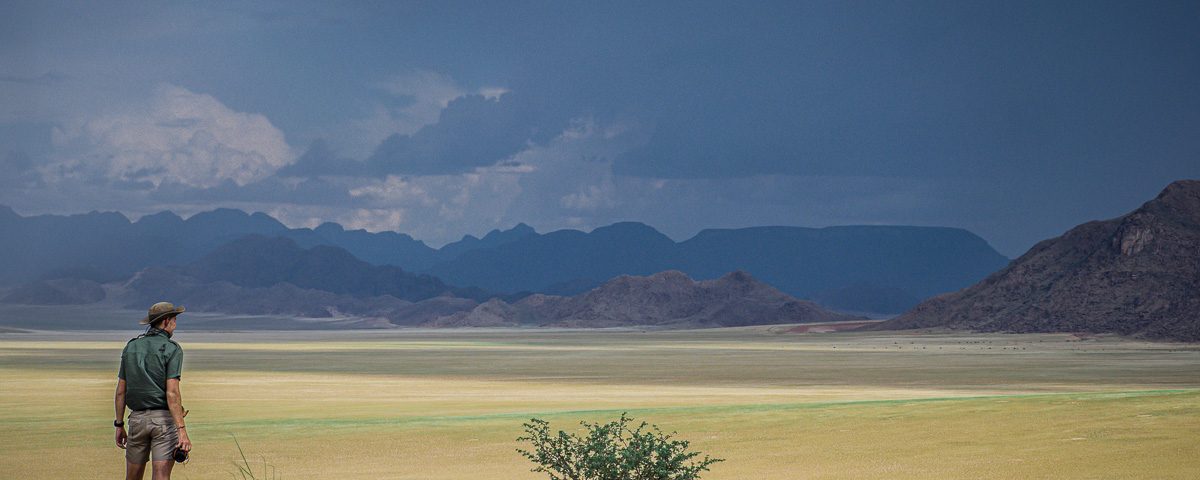
Conservation Heroes – Agnes Tjirare Making Waves In Conservation
October 28, 2021
Birds of smoke and fire
October 29, 2021Wilderness Safaris recently offered me an amazing opportunity to do a biodiversity study at Kulala Desert Lodge. This lodge is situated on 35 000 hectares of vast dry landscapes, enormous mountains, dry rivers and the breathtaking Sossusvlei dunes.
I was specifically recruited to plan routes for night walks. As Namibia was favoured with an above-average rainy season, the change in this desert area’s biodiversity was spectacular to observe.
The landscape blossomed with life. Green grass covered the land as far as the eye can see, even on the dunes. What a joy to see shrubs thriving again along the river course. During the day, small animals like lizards, mice and snakes make use of this vegetation to take shelter from heat as well as their predators. Larger mammals like gemsbok could also be seen everywhere.
For a period of two months I explored the vivid night life of the desert and covered a distance of around 40 km every night. I found a vast diversity of creatures and was sometimes even accompanied by an inquisitive brown hyena.
I found my flashlight useful to pick up the eye-shine of little critters like male barking geckos calling for females before they quickly disappear back into their burrows. The females would follow the call of the male. Once the gecko has selected a mate, she enters his burrow and mating begins.
But after the rain, solifugae started emerging to hunt for food and unfortunately barking geckos are an easy item on the menu. I noticed that especially the females were affected by this because they are out in the open while searching for males.
Deeper into the night, as I started entering the sandy areas, one of my favourite geckos appeared: the web-footed gecko (Pachydactylus rangei). These geckos are only found in Namibia. They have very thin, translucent skin. When humans pick them up, the oils and flakes of the human’s skin will stick to this gecko’s translucent skin, making it easier for predators such as jackals to find them.
Back where the sand meets the rocky areas, I found quite a lot of giant ground geckos (Chondrodactylus angulifer). This is the largest gecko species in Namibia. When they encounter a predator, they will stand their ground while making a loud grunting sound, lunging at the predator with a quick sprint. This is a mock charge but it can actually be quite intimidating.
This wide, open space with never-ending horizons can really surprise you with its flourishing biodiversity. I felt quite at home in the silence of the wind blowing sand over the dunes during the day and the absolute lack of light pollution by night. I am really looking forward to go and experience the effect that winter has on life out in the Namib Desert. TNN
Text & Photographs Heinrich Le Roux
Find Heinrich on social media
Instagram: @the_adventure_hippie
Twitter: @LerouxHeinrich


